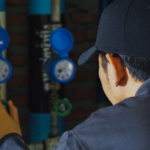Essential Skills For Working Safely At Heights
Working at heights can be pretty intimidating, but it’s something that many jobs require. Ensuring safety while being up high is incredibly important, both for personal well-being and team effectiveness. Whether you’re on a construction site, cleaning windows on a skyscraper, or simply any task that requires leaving the ground behind, knowing how to stay safe is key. Getting the right training and keeping safety practices fresh in your mind means that you can handle these situations with confidence and care. No one wants an accident or injury, so understanding safety essentials helps avoid unexpected mishaps.
It’s not enough to learn about safety techniques and leave it at that. Safety practices and techniques evolve, and regular training sessions ensure you’re always up-to-date with the best strategies and equipment. Staying sharp safeguards not only you but your coworkers as well. Keeping safety training refreshed turns a challenging task into a well-understood routine, building a foundation for a secure and efficient work environment.
Understanding the Risks
Working at heights isn’t just about standing on a ladder or looking down from the top of a scaffolding. There are various risks involved that need attention. One main risk is falls, which can happen from ladders, rooftops, or open edges of buildings. Even a small slip can lead to serious injuries. Losing balance on unsteady surfaces or stumbling over obstacles are common issues that workers face. It’s essential to see these circumstances coming and to approach them with a plan in place.
Another issue is improper use or malfunction of safety equipment. For example, harnesses and safety nets are designed to catch you in an emergency, but they need to be used correctly. If equipment is worn out or not assembled properly, it might not offer the protection you need. Windy conditions or poor weather can also make working at heights significantly riskier. Strong winds can knock things over, and rain can make surfaces slippery. Planning your tasks based on weather forecasts can prevent unnecessary danger.
Working in cramped spaces like between beams or on narrow platforms is also something that workers might encounter. Movement becomes restricted, and there’s a higher chance of bumps or falls. Understanding these challenges and having clear strategies to counteract them helps in managing these situations. Here’s a quick checklist to consider:
– Always check your equipment for any signs of wear or damage before use.
– Make sure that all harnesses and safety lines are properly fastened.
– Keep pathways clear and watch out for obstacles that could trip you.
– Monitor weather conditions and adjust plans if you face inclement weather.
– Maintain communication with your team, giving updates on your position.
Knowing these risks means you can work smarter, using forethought and practical measures to keep mishaps at bay. By facing the challenges head-on, working at heights can be done safely and efficiently.
Essential Skills for Safety
When working at heights, having the right skills makes all the difference. Before climbing up, make sure you’re comfortable with safety gear like harnesses and lanyards. They aren’t just accessories but your lifeline while working at heights. Knowing how to securely strap on a harness and connect it properly can save the day. It’s also important to understand weight limits and load calculations. Knowing the exact capacity your equipment can handle ensures that everything stays in place and no harmful surprises pop up.
Regular inspection of all gear is another step you can’t skip. Your harness or safety line should be checked for any signs of wear and tear. Like shoes with worn soles, old gear could fail you just when you need it the most. Keeping a lookout for fraying, loosened straps, or other damage means being ready to replace items before they compromise safety. This attention to detail prevents accidents and maintains a secure work environment.
Staying informed about the latest safety measures and techniques is wise. Enrolling in updated training courses regularly keeps your skills sharp and helps you learn new methods, which can be really useful, especially if you work with others who rely on your expertise.
Staying Alert and Prepared
Being alert and prepared is part of the foundation when working at heights. Staying vigilant can be challenging, especially during long shifts or in hectic environments. But simple steps can help keep focus sharp. Taking short, regular breaks can refresh the mind and prevent fatigue. Hydration is also crucial since staying well-hydrated helps maintain concentration and mental clarity.
Situational awareness is your ally. Staying aware of your surroundings means you can quickly identify anything out of place. Observing changes in weather or unexpected obstacles can make all the difference. Training your mind to remain aware helps prevent becoming too focused on one task, potentially overlooking other issues.
Creating an emergency response plan is essential for preparedness. Knowing the steps to take if something goes wrong ensures everyone knows their role and responsibilities. Here’s a simple guide to get you started:
– Know the evacuation routes and meeting points.
– Keep emergency numbers easily accessible.
– Regularly practice responding to various scenarios with your team.
– Ensure first-aid kits and emergency supplies are easily reachable.
– Designate a reliable point person for emergencies.
Regular drills and reviews keep everyone practised and ready, making sure quick and effective action can be taken when it’s needed most.
Training and Drills
Training is more than just a checkbox on a safety list; it offers real-life practice and familiarity with the tools and skills needed in high-stress situations. Attending a Working at Heights Refresher Course in Perth can provide valuable insights into handling equipment, understanding safety protocols, and managing potential hazards. These courses cover practical exercises that mirror what you’ll face on the job, building both confidence and competence.
Drills help solidify this knowledge. Practice involves not just knowing what to do but physically going through the motions until they become second nature. Regularly attending training or refresher courses ensures your skills don’t become outdated. As equipment and methods evolve, staying in the loop guarantees your safety skill set is always at its peak.
Stay Safe and Confident
Embracing the knowledge and skills required for working safely at heights empowers you to tackle each task with confidence. Understanding the risks, utilising the right equipment, and keeping your training up-to-date create a safety net that reduces accidents. Developing a mindfulness for constant awareness ensures that unplanned surprises won’t catch you off-guard. Each element plays a role in creating a comprehensive approach to safety.
Confidence comes not just from knowing how to use your gear or follow a protocol, but because you’ve trained and prepared for what lies ahead. Regular training and staying informed foster an environment where safety becomes second nature. By continuously learning and practising these essential skills, you’re not just working safely but smartly.
Elevate your safety skills by enrolling in a working at heights refresher course in Perth with Access Unlimited. Our comprehensive training sessions ensure you’re well-prepared for any challenge up high. Refresh your knowledge, stay updated with the latest safety protocols, and continue working efficiently and confidently at heights every day.



